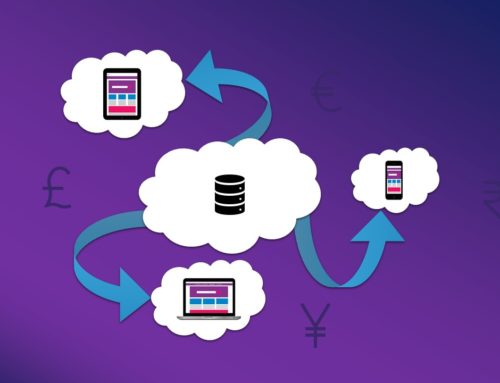The exponential growth, availability and disposal of structured and unstructured data is termed as Big Data. It involves data-sets with sizes beyond the ability of common apps to capture, manage, and process data within reasonable time. Big Data may lead to more accurate analyses when used in a right way. This in turn lead to more informed decision making resulting in greater operational efficiencies, cost reductions and reduced risk.
Every day, we create more than 2.5 quintillion bytes of data. This data originates from everywhere: smartphone, GPS signals, social media, digital payments, pictures and videos to name a few. This data is big data.
According to Doug Laney, an Analyst at Gartner; data growth challenges and opportunities are three-dimensional. i.e. increasing volume (amount of data), velocity (speed of data in and out), and variety (range of data types and sources). Industry adopted this “3Vs” model for describing big data.
Three Vs of Big Data
Big data is a mix of huge volume, high velocity, and high variety information assets. Traditional tools fail to process this data effectively. Therefore it requires new forms of processing to enable superior insight discovery, enhanced decision making and process optimization.
- Volume: Data volume refers to “internet scale”. Today data is growing in sizes of petabytes, terabytes, quintillion bytes and even more. Data volume increases due to many factors. For example transaction-based data stored through the years and data streaming in from social media etc. As a result issues of determining its relevance and use of analytics to create value from relevant data has emerged.
- Velocity: Velocity refers to the low-latency, real-time speed at which analytics needs to be applied. Examples of monitoring and analyzing such information includes traffic, critical healthcare, weather, trading – any system where there is continuous critical feeds from different sources, and analytics response needs to be looped back into the sources of information for superior monitoring. Certainly reacting fast enough to deal with data velocity is a challenge for most organizations.
- Variety: Today data comes in all types of formats from all over the place. Most of the organizations have only 10% structured data in traditional databases. Unstructured text documents, email, financial transactions video, audio, tweets, and stock ticker data etc. consists of 90% of data. Hence, managing, merging and processing different forms of data is something many organizations still grapple with.
Big data and Business Intelligence
Big data analysis uses concepts from nonlinear system identification and inductive statistics. It does so, to infer laws (nonlinear relationships, causal effects, regressions) from massively large data sets. As a result it help reveal dependencies, relationships and make predictions of behaviors and outcomes.
Business Intelligence (BI) uses descriptive statistics with high information density data to measure different things, detect trends etc.
Why Big Data is important for you?
Today organizations are gathering massively huge data everyday from many sources. The big question is how to harness and analyze relevant data to find answers that facilitate:
- Cost reductions
- Time reductions
- Smarter business decision making
- New product development
- Optimized offerings
- And much more
For example, by blending high-powered analytics with big data, it is possible to:
- Monitor and pinpoint root causes of problem areas, failures, critical issues, errors and defects in near-real time, possibly saving billions of dollars annually.
- Analyze and process multi-million SKUs to define prices for maximum profit and clear inventory.
- Send tailored recommendations to customers on their mobile device to take advantage of offers.
- Recalculate complete risk portfolios in minutes.
- Rapidly and quickly identify patrons who matter the most helping you make quick sales.
Big Data Challenges
The amount of data collected today is becoming so large that it is getting massively complex to process and difficult to find the most valuable pieces of information. Until recently, businesses were limited to process subsets of their data, or compelled to do simplistic analyses because the large volumes of data dazed their processing platforms.
What is the point of gathering and storing terabytes of data if you can’t process and analyze it in full context, or if you have to wait for hours or days to get meaningful results? Advancements in big data analysis provides cost-effective opportunities to improve decision-making in critical development areas such as economic productivity, health care, employment, crime, Market analysis, security, Competition analysis, Brand Management, resource management and natural disaster.
For big data to be effective you have two choices:
- Incorporate massive data volumes in analysis: One approach is to employ high-performance analytics to analyze the massively large amounts of data. If you seek answers that will be better provided by analyzing all of your data, go for it. High-performance technologies like in-database processing, in-memory analytics and grid computing that extract value from massive data are here today.
- Determine upfront which data is relevant: Traditionally, businesses believed in data hoarding. In this approach everything is stored and only when you query the stored data the relevant piece of information is discovered. Today certainly, we have the capability to apply analytics on the front-end to define relevance based on context. As a result, we can pinpoint data that should be incorporated in analytics and what can be put in storage.
Big Data Technologies
Big data requires exceptional technologies like A/B testing, data fusion and integration, crowdsourcing, genetic algorithms, natural language processing, signal processing, time series analysis, machine learning, visualization and simulation to efficiently process huge quantities of data within tolerable elapsed times.
Multidimensional big data can be more efficiently treated by tensor-based computation, such as multi- linear subspace learning. Likewise other technologies applied to big data include MPP (massively parallel- processing) databases, data-mining grids, distributed file systems, search-based applications, distributed databases, cloud based infrastructure and Internet.
A number of recent technology advancements enable organizations to make the most of big data and big data analytics:
- Faster processors.
- Open source and affordable, distributed big data platforms.
- Cloud computing and erstwhile flexible resource allocation arrangements.
- Parallel processing, MPP, clustering, large grid environments, virtualization, high connectivity and high throughputs.
The aim of every enterprise with access to large data collections must be to exploit the most relevant data and use it for superior decision making.
Big Data Services by WeCT
WeCT offers several key services that can help you handle your big data, and extract meaningful value from it.
- Data management: Unlike other solution providers who look at big data as a term related to technologies like NoSQl, Hadoop, etc. Data governance and data management solutions and strategy services by WeCT allows any amount of data to be managed, processed and used effectively.
- High-performance analytics: Take advantage of high-performance analytics and parallel processing power, which lets you do things you thought are not possible because the high data volumes. Now you can do that and that too with more accuracy and efficiency.
- High-performance data visualization: With WeCT high-performance visualizations services, you can explore large volumes of data in seconds that enables you to quickly identify opportunities for further analysis.
- Flexible Big Data deployment options: Flexible deployment models offer choices. High-performance analytics from WeCT can analyze billions of variables, and the solutions can be deployed in the cloud on a dedicated resource or within your existing IT infrastructure, according to your requirements.
Let WeCT show you how Big Data can help you transform your business. Reach us today!
Recommended for you
Re-imagining businesses through experiences
We are a full-service digital agency with leading capabilities across digital – from web design to development, branding to marketing, cloud transformation to security. We create human-centered and future proof experiences – enabling transformation, ensuring sustainable growth.


